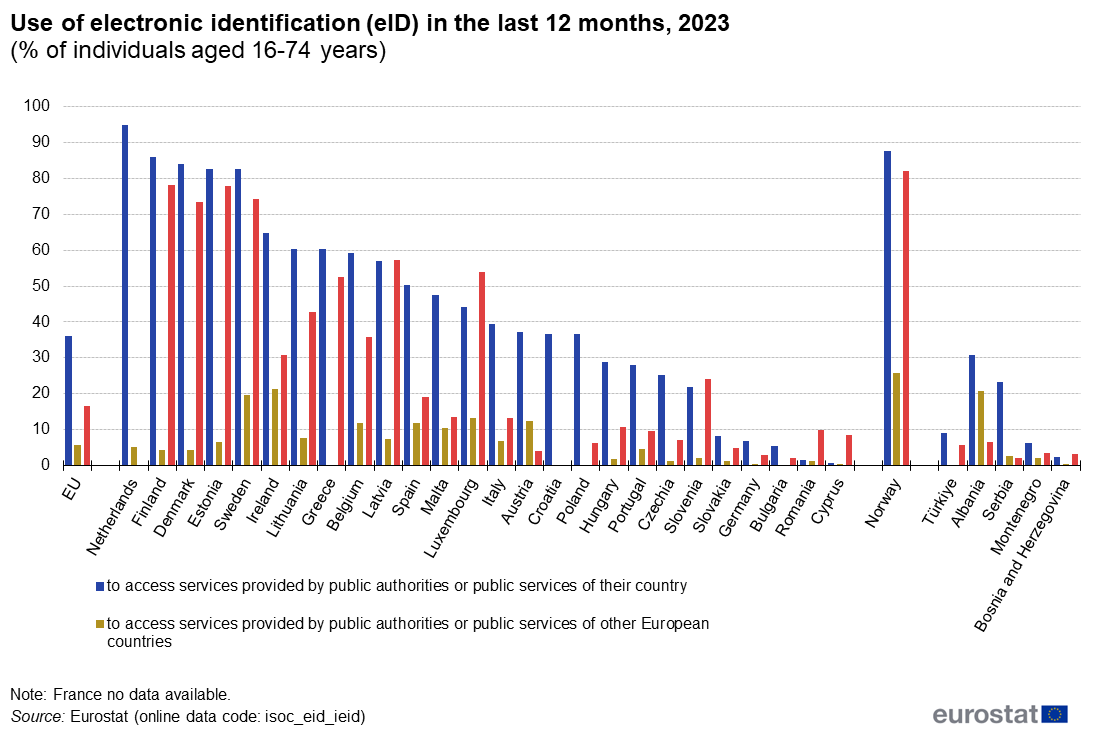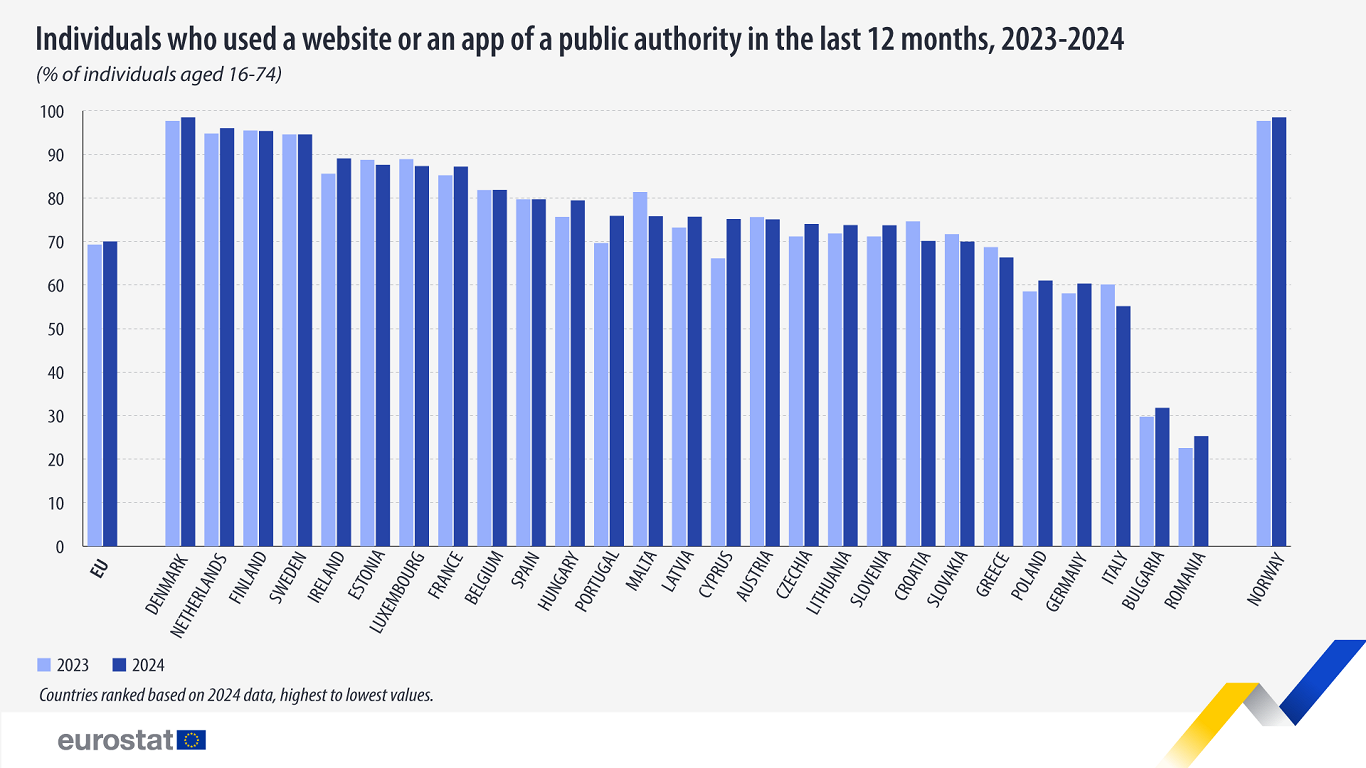Among the EU countries, Denmark (98.5%), the Netherlands (96.0%) and Finland (95.4%) had the highest shares of e-government usage in 2024. By contrast, Romania (25.3%), Bulgaria (31.5%) and Italy (55.1%) had the lowest shares.
Despite frequently talking up its e-credentials Latvia has a mid-table showing of 75.6%, slightly ahead of Lithuania (73.7%) but well behind Estonia (87.5%). Nevertheless latvia is above the EU average.
In 2024, the most common usage of e-government services in the EU was obtaining information about services, benefits, laws, opening hours, or similar topics (44.0%). This marks an increase of 2.4 pp from 2023.
Accessing personal information was the second most common activity, with 40.0% of people making use of this service, up by 0.8 pp from the previous year. Downloading or printing official forms came third, with 38.1% of people in the EU using this service, although this represents a decrease of 1.8 pp compared with 2023.
The least common e-government usage was making other requests, claims, or complaints (5.3%, up by 0.5 pp).
When it comes to electronic identification (eID), Latvia does slightly better compared to its EU peers.
In 2023, the highest percentage of people stating that they had used their eID in the previous 12 months to access services provided by public authorities or public services of their own country was found in the Netherlands (95%), followed by Finland (86%) and Denmark (84%). The EU average was 36% but Latvia was better than that on 57%.

Use of eID in 2023
Photo: Eurostat
Select text and press Ctrl+Enter to send a suggested correction to the editor
Select text and press Report a mistake to send a suggested correction to the editor
Tell us about a mistake
